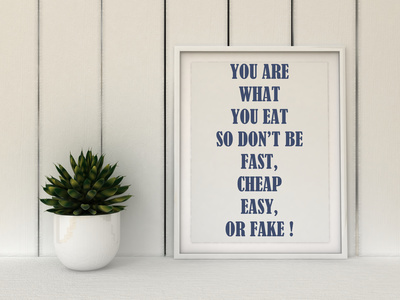Nutrition advice can’t be boiled down to headlines without losing important context. For this reason, Americans are often on the receiving end of partial dietary advice without access to the complete picture.
These headlines often fall into one of two categories: what to eat, and what not to eat. The trouble is that most foods are only good or bad in the context of what they’re replacing. For example, many would agree that juice is certainly a better choice than soda. But it’s certainly no replacement for water. Indeed, no one sentence can sum up the complex hierarchy of eating choices, which is why what we eat is just as important as what we don’t.
Decades ago, when researchers advocated eating a lower fat diet (after studying the benefits of healthy, plant-based diets), they certainly never intended for us to eat more sugar. But without ever getting the message about what to eat instead, that’s precisely what we did. The failure of low fat messages is also largely attributed to the focus on nutrients instead of foods. After all, any junk food can be reformulated to be low fat, delivering a good source of whatever nutrient is in vogue. But without enough focus on the what to eat messages, food marketers were all too eager to all the communication gap, hence the rise (and fall) of the infamous Snackwell cookies.
Positive messages about what to eat are also helpful from a psychological standpoint, and research backs this up. According to the 2015 Food and Health Survey from the International Food Information Council, a whopping 78% of people strongly agree (33%) or somewhat agree (45%) that they would prefer positive messages about what to eat rather than negative messages about what not to eat. In fact, only 13% of people said they were looking for free from messages on packages (such as fat free, sugar free) down from 24% in 2012.
That said, messages to eat more of certain foods are also incomplete. For example, eating more whole grains is only half of the picture we also need to eat fewer refined grains. Public health experts hope that by eating more of these healthy foods, less healthy foods will naturally get pushed of the plate. But Americans are nothing if not ambitious eaters. While we may be eating more of these healthy foods, we also tend to be eating more in general. This is the land of plenty, after all.
Practical advice that encompasses what to eat and what not to eat can also help us learn the difference between foods that aren’t bad for us and foods that are actually good for us. For example, headlines claiming that butter is back (based on studies showing that high butter diets were no worse than high sugar and white bread diets) failed to report that choosing butter instead of unsaturated fats (found in fish, nuts, seeds, and slower oil) or whole grains can actually increase heart disease risk.
As research on butter and heart disease clearly illustrates, what we eat and what we dont eat both contribute to health outcomes. For this reason, the scientists of Oldways Common Ground, a diverse panel of the worlds leading nutrition experts, strongly endorse the general principle of specifying practical dietary substitutions a compared to what approach. Meaningful nutrition guidelines may not make for sexy headlines, but its just the kind of tangible advice that can help bring common sense back to the table.
– Kelly Toups, Whole Grains Council Program Manager









Leave a comment